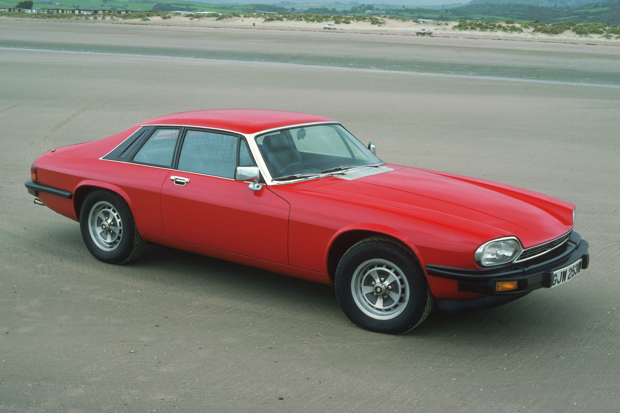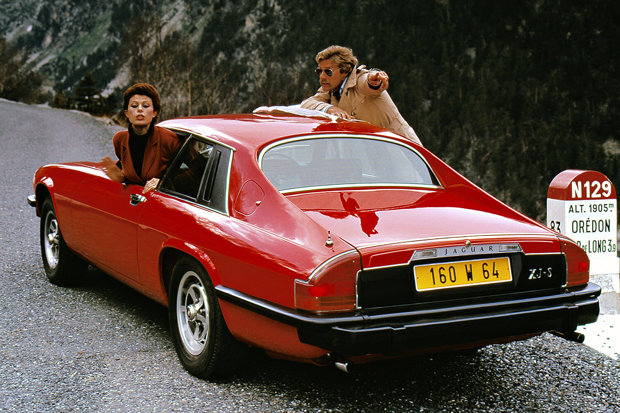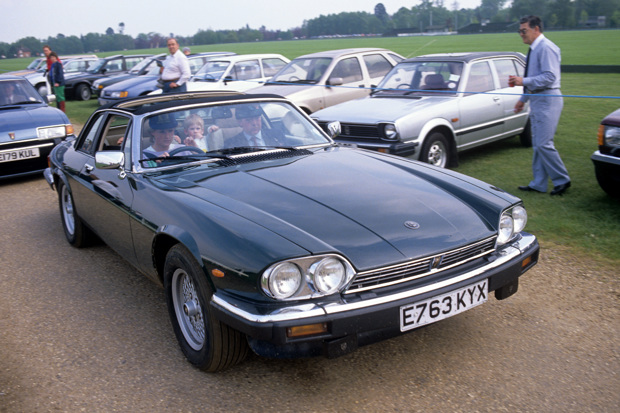Monday Motoring Classic: Jaguar XJS

The world wasn’t ready for the Jaguar XJ-S when it first appeared, an astonishing 48 years ago. So unready, in fact, that the car’s birth was an extremely difficult one.
There were two factors that didn’t help in the slightest. The first was that Jaguar pitched it as a replacement for the Jaguar E-Type, where in reality the XJ-S was much wider, heavier and less agile.
It was a grand tourer, not a sports car but because Jaguar set a certain level of expectation at launch, the car’s genuine qualities were often overlooked. For although the XJ-S was too wide, long and heavy to be a true sports machine, as touring cars went, it was among the best in the world.
The second mistake was more a case of bad timing than anything else. With only one engine at launch – Jaguar’s wonderfully complex, beautifully refined, but eye-wateringly inefficient 5.3-litre V12 – the fact it arrived at the peak of a global oil crisis didn’t do Jaguar any favours.
The European market was moving towards smaller four cylinder cars at a rapid rate, while even over in the States the focus was on exhaust emissions and fuel efficiency.
Then there was the styling. In its day, the XJ-S was controversial. While time may well have flattered the model’s broad shouldered flanks, bugeye headlamps and infamous ‘buttress’ rear pillars, when it debuted the XJ-S looked like nothing else on the road. It was avant-garde to the point of being considered ugly by many.
In time, the XJ-S gained much more acceptance. It was popularised on TV in The New Avengers and Return of the Saint (ironically, after Jaguar had turned down the original The Saint TV Series leaving the production company to source a Volvo P1800 instead). Spin-off toys were created of both, and are highly collectable today.
In 1981, the XJ-S received a few subtle tweaks. Chrome-inset bumpers, a less intricate dashboard and new alloys were added, but of far more significance was the move towards the 5.3-litre V12 HE (for High-efficiency) engine.

The efficiency element was relative, but did give the XJ-S the ability to achieve more than 20mpg in the right conditions.
The most significant mechanical change came a couple of years later, though, with the introduction of the 3.6-litre AJ6 engine, which was being readied for the forthcoming XJ40. Regarded as one of Jaguar’s all-time best powerplants, the AJ6 replaced the stalwart XK engine and brought with it power, refinement and performance coupled to impressive reliability and reasonable fuel economy.
That was further helped in 1983 by the addition of a targa-topped cabriolet, known as the XJ-SC. It didn’t sell in huge numbers, but it did offer a soft-top option to the XJ-S range that proved popular enough for Jaguar to invest in the engineering required for a full convertible version, which appeared in 1988.
A convertible was even commissioned for Diana, Princess of Wales, as her personal car. Although the Cabriolet was normally offered only as a two-seater, this car was specially fitted with rear seats for the young Princes William and Harry. She owned it from 1987 to 1991.
But by then, the Jaguar XK-S was an ageing design and with no money in the bank to develop a replacement, Jaguar’s only option was to continually upgrade and modify the car to suit the market. A replacement known as the F-Type was canned due to cost and the XK8 would not appear on the drawing boards until after the Ford takeover of Jaguar in 1990.
Indeed, it was Ford that gave the XJ-S a stay of execution, commissioning the Jaguar styling studio, under the command of Geoff Lawson, to go ahead and tweak it for the 1990s.

Cue the XJS, with hyphen mysteriously removed. Launched in 1991, the new car came with some fairly significant styling changes to the rear end, including a flatter wraparound rear end with darkened plastic tail lamps and a revised side window design to improve rear three-quarter visibility.
The idea of getting rid of the model’s flying buttresses had been considered and even modelled by Jaguar as a potential Daimler variant of the original XJ-S, but in the end Lawson decided they were an inherent part of the car’s DNA.
Instead, the edges were subtly rounded off, more colour-coding was introduced to align the car with the style of the 1990s and the switchgear was modified to make the cabin feel more up-to-date. The V12 engine also saw some changes, with its capacity increased to 6.0-litres, while the entire feel of the car (and its pricing) were moved upmarket.
The changes were enough to keep the XJS alive for longer than many people expected. When it was finally retired in 1996, ahead of the much more modern XK8’s arrival, it had enjoyed almost 21 years of continuous production and had sold over 125,000 - ironically, over 50,000 more units than the ‘legendary’ E-Type. So perhaps the XJ-S wasn’t such a disaster after all…
Today, it certainly isn’t. Indeed, we think it’s very cool – and like many 40 plus year olds, enjoying a new lease of youth. Find a classic Jaguar XJ-S for sale.


